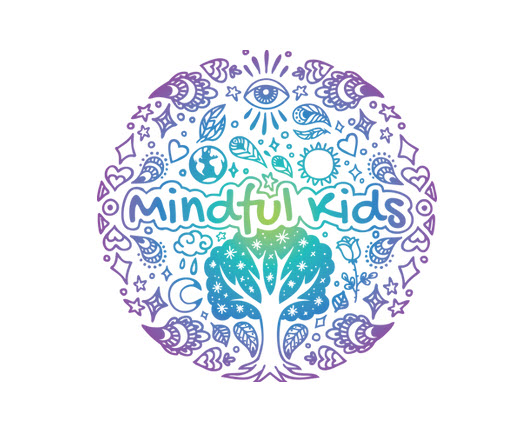 What is the connection between gratitude and mindfulness?
What is the connection between gratitude and mindfulness?
I posed this question to Heather Hawk Feinberg, Founder of www.mindfulkidscommunity.org and we had an amazing conversation about the power of language and simply asking the question: “What are you thankful for?” Here are a few of my favorite takeaways:
“To me, the concept of mindfulness is really about being present to ourselves in all of what it is that we’re experiencing. Where gratitude and mindfulness meet is in the simplest of moments – when we are present and can even take it one step further of really acknowledging and bringing in heartfulness. I actually like the word heartfulness better than gratitude. And, I like the word presence more than mindfulness.”
Heather isn’t the only one to remind me about the power of language and express a preference for words such as thankfulness or heartfulness over gratitude.
Formal research and definitions aside, we are all unique. Words can certainly take on different meanings and feel different to each of us. After many interviews and conversations, I think it’s important we notice these personal preferences and tune in to what resonates for each of us individually. Gratitude? Heartfulness? Thankfulness? Appreciation? While these words all technically mean different things, I am approaching my conversations and interviews through dailygratitudehabit.com with a more overarching and interchangeable use of these words, knowing that different words work differently for different people. The point is more about helping us each to acknowledge and find that feeling – whatever we want to call it.
Heather’s take on gratitude vs. appreciation: “To me, the simplest way to explain it would be that gratitude is deeper. I can appreciate that my husband has a different perspective on an issue, but I’m not necessarily grateful for it. (Ha ha!) I think gratitude brings us to a place that appreciation doesn’t.”
But let’s go back to the mindfulness/gratitude connection.
“Bringing presence and heartfulness together (or mindfulness and gratitude) comes in being able to give love and acknowledgment to whatever it is that’s happening within us or around us – whatever we’re being present to or mindful of.”
Choosing the lens of gratitude isn’t always easy. Heather and I spoke about gratitude as a tool or practice we’ve both used to face life’s challenges and how can we encourage others to discover this practice.
One of the things she’s always mirrored and taught her daughter and the kids she works with is the notion that life doesn’t happen to us. “Life happens for us. That means that in everything that’s happening, there is a gift for us, even if it seems like the most horrible thing. Because horrible things can and do happen.”
So if we consider life happening for us, how can we encourage conversations and practices around gratitude/thankfulness to find the lessons, blessings, and gifts, even when they might not be obvious?
Developing our own habits and practices becomes important, because our children and others will mirror how we’re showing up. Can you take a quick pause to intentionally decide on a gratitude practice or habit? It doesn’t have to be a journal or a formal practice, but it helps to connect it to an existing behavior or anchor which can serve as a trigger or cue. (learn more) Example: After I open my eyes in the morning, I will think of one thing I’m grateful for.
But what about teaching the concepts?
When Heather first started her nonprofit, she went into schools and was asked to do something on gratitude for kids. While gratitude was and still is a big buzzword, she found the word gratitude to be a more difficult concept for kids. “Thank you” and giving thanks was more accessible.
She introduced the idea with a thank-you journal. Or even a prayer journal when that worked for the family. “Because what is it that we’re trying to help them experience? We don’t want them just going through the motions. We want to practice and teach how to really tap into the feelings of thankfulness.”
Heather found gratitude as an entryway to prayer in many ways. “We’re saying thank you, and thank you is a prayer in some regard. And again, these are just words. They work for some people, and they don’t work for other people. For some people, when you say gratitude is a prayer, that would turn them off. But for others, it’s a beautiful entry point into gratitude: Oh! I didn’t realize I was actually praying when I did that!”
In trying to best engage her younger students, Heather even wrote a song about being grateful. She found when you can bring in music and movement and clapping, the whole body gets into it. While she’s not a singer or songwriter, that’s just what came through her to connect with her young audience.
When introducing the conversations and teachings around gratitude, we also discussed the importance of asking the question: what is it we’re actually inviting people to do or experience within themselves, whether it’s adults or kids?
When you sit and think about what you’re grateful for, what happens in your nervous system, your energetic space, your body, your mind, and your heart? What happens to your relationships when you show up from a place of appreciation and thankfulness? These are just a few of the areas where research supports the physiological and psychological benefits of gratitude.
As we seek to continue the conversations and share these benefits, language will continue to be an entry point to certain teachings. Whether engaging with our friends, families, communities, athletic/sports teams, the workplace, etc, here are a few other fun phrases and practices to approach gratitude that Heather and I discussed.
“What you appreciate, appreciates” ~ Lynne Twist
We both learned this teaching and love it! When we say we’re grateful for something, we’re essentially saying thank you and more, please. Where we put our attention matters.
Heather also loves the word and concept of celebrating, as do I. She does some adjunct faculty work with educators getting their Master’s in Education, and she uses “celebration” as another entry point into that same place: as a way of dropping into our hearts and opening up enough to be able to say, what’s happening within me? And what can I look for and notice that is good?
We’ve both had teachers who taught us to ask: “what’s new and good?”
I love the “What’s new and good” question because it’s priming us to look for the good vs. immediately noticing what’s not working. Usually, we when we ask each other: “how are you?” Most of us tend to go to the negative: “Well… this is happening, and this is hard etc.” Of course, we all have challenges and we’re not dismissing the need to acknowledge and get support with these challenges. But can we perhaps try to look at the challenge through a lens of: What lesson are you currently learning or who is supporting us during this challenge, and can we feel appreciation, gratitude, or thanks for the support, or for the lesson?
Embrace the question
We all want and seek answers, but sometimes it’s about sitting with the questions.
Heather shared a great story about an interview years ago to get her job at the temple. The final interview question was: What relationship is the most important relationship that you have in your life?
She remembers sitting with that question for what felt like forever, wondering how there could be one right answer. She had so many feelings coming to her of love, appreciation, and connection. She doesn’t even remember her answer, but she remembers the question. The interviewer loved to ask that question because it wasn’t the answer that mattered, but how she could see what the interviewee was experiencing while processing the question.
When you start to look at who and what you’re grateful for, everything slows down. It helps us connect to our present feelings and what is. You can’t help but be fully present, noticing the heartfulness as you think about how much you love this being.
So by continuing to ask the question: “What are you thankful for,” you can tap into your feelings and send energy throughout your entire being – waking everything up, bringing calm where there wasn’t, bringing openness where there was contraction and activating what was asleep.
Thus, the mindfulness connection of being present, slowing down, and “feeling the feels!”
My final question to explore with Heather: how can we support each other in modeling, teaching or learning about gratitude and why does this matter?
“Gratitude is a gift that we give ourselves and each other.”
Receiving gratitude is a such gift. And sharing/giving gratitude can feel equally special. But it can also feel vulnerable to really share those heartfelt feelings and that deep gratitude – people aren’t necessarily comfortable with it. So how do we encourage more sharing?
“I think that’s part of the gratitude movement that hasn’t quite surfaced yet – is how it allows for a deeper vulnerability and sharing. We talked a little bit about gratitude and what it does individually, within us. But if it’s shared between us, could it continue to expand outward and support the evolution of our consciousness – perhaps increasing the ability to be able to really meet someone where you’re at and where they are at, even when those places aren’t the same? To be able to stand in our presence and be who we are and not close ourselves off and not feel unsafe and not speak from a place of needing to protect ourselves or being defensive or any of those things, and to be able to offer from the heart, you know, our true essence, our true feelings.”
Vulnerability can allow us to see and understand each other and find gratitude for shared human feelings and experiences. There will be challenges along our journeys, but may we continue to notice and share what we’re grateful for in each other as we move forward to create more meaning and connection.
Thank you for our beautiful conversation, Heather!
—
Heather, Founder of Mindful Kids (https://www.mindfulkidscommunity.org/), has a B.A. in Anthropology, and an M.A. in Counseling and Human Services from The University of Colorado. She held a license as a professional counselor (LPC) in the state of Colorado. She trained extensively at the Inner Connection Institute in Denver, Colorado, and is a student of A Course in Miracles. She is certified as a Spiritual Director for Children and Adults. Above all else, Heather is here to learn. She lives in Sarasota, FL with her husband and daughter where you can find her dreaming up her next children’s book and sitting on the beach.
What are you grateful for today?
Take a couple minutes out of your day to create/reinforce the habit of gratitude. Even and especially if it's a hard day. Where can you notice something beautiful or meaningful? Who can you thank? What might be a lesson or blessing in disguise? Take a deep breath. Become present and choose gratitude. ♥


